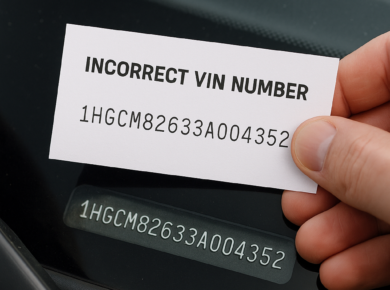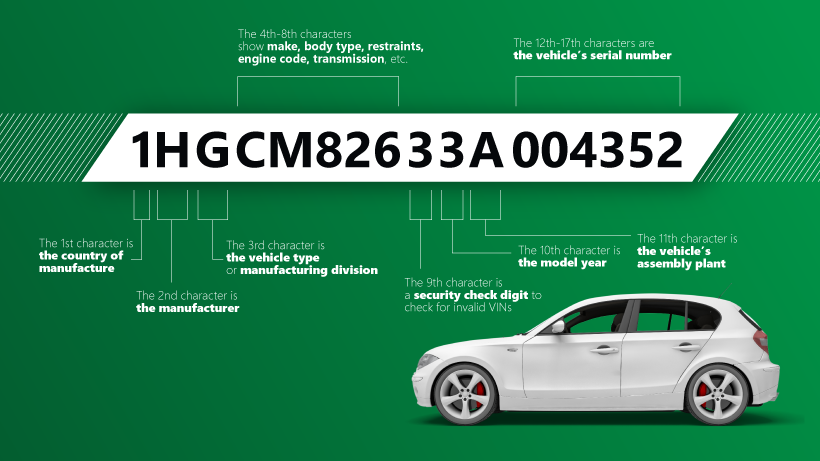A VIN lookup is a quick way to reveal a vehicle’s full history—everything from car specifications and recall records to ownership transfers, odometer readings, liens, and theft reports. Whether you’re a dealer or bidding in an online auction, knowing how to read a VIN is crucial for choosing cars with clean backgrounds. But sometimes, your VIN won’t decode. Here are the most common causes and what to do about each.
1. Fewer Than 17 Characters in Your VIN
Before 1981, VIN numbers varied in length (often 9 or 11 digits), so classic cars and certain imports may not meet the 17‑digit standard. If your VIN lookup tool can’t find a match:
- Confirm you’re entering all characters (including zeros).
- For pre‑’81 vehicles, try a specialist classic‑car VIN decoder or consult a restoration shop.
2. Illegal or Prohibited Symbols
International VIN standards exclude the letters I, O, and Q to avoid confusion with 1 and 0. If your VIN includes one of these, decoding vehicle identification number software will fail. Possible fixes:
- Double‑check the stamping for misreads (e.g., I vs. 1).
- Verify with your local DMV or manufacturer to correct any altered or fraudulent VIN.
3. Checksum Test Failure in Position 9
North American VINs use the 9th digit as a checksum. If it’s incorrect—neither 0–9 nor X—your VIN can’t be validated. To resolve:
- Ask the seller for a clear photo of the VIN plate.
- Compare against the title or registration document.
- Reach out to your state DMV to confirm the correct checksum and update records.
4. Decoder Database Doesn’t Include Your Vehicle
Some tools focus on U.S.‑market passenger cars, light trucks, ATVs, or European models. If you can’t decode this VIN, check whether:
- Your vehicle’s market (e.g., Canada, Asia) is covered.
- The tool handles the specific class (heavy‑duty trucks, motorcycles).
For broad coverage, choose a provider that supports both the U.S. and Canada, multiple model years (1981–present), and thousands of trim levels.
5. Year‑of‑Manufacture Gaps
Brand‑new models may not yet appear in a VIN lookup database, and very old vehicles might have been purged to keep records current. Solutions include:
- Trying again after the next database update (manufacturers often release new‑model VIN batches in quarterly cycles).
- Consulting manufacturer build sheets or auction house archives for recent or classic releases.
6. Ambiguous Vehicle Configurations
VINs encode body style, engine type, trim, and more in positions 4–9. If your lookup tool can’t pin down a trim‑specific record (e.g., car model by VIN), it may default to the base model. To get precise specs:
- Use a dedicated VIN decoder that offers a window‑sticker lookup by VIN.
- Contact the OEM or request factory build documentation.
7. Physical Damage or Alteration of the VIN Plate
Tampering—whether accidental (rust, repaint) or deliberate (fraud)—can obscure characters. If decode this VIN returns errors:
- Inspect every VIN location (dashboard, door jamb, engine bay).
- Compare multiple VIN plates and verify against paperwork.
- In suspicious cases, involve a certified inspector or law enforcement.
How to Decode a VIN Correctly
- Locate all VIN positions (dash, door pillar, firewall).
- Use a reliable VIN lookup service that supports decoding vehicle identification number standards, including checksum verification.
- Cross‑reference with title documents to catch any discrepancies.
- Consult the manufacturer for build‑sheet details, especially for rare trims or recent models.
Why Accurate VIN Decoding Matters
Getting your VIN to decode properly ensures you uncover the true vehicle model by VIN, avoid hidden title brands, and spot odometer rollbacks. A clean decode—you’ll know exactly what you’re buying before you bid or sign on the dotted line.
For fast, reliable decoding of VIN numbers and comprehensive vehicle history, ClearVin combines NMVTIS data, state DMVs, insurance records, and auction logs—so you can decode a VIN in seconds and drive with confidence.










